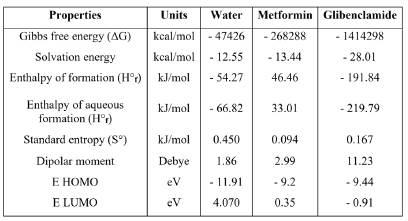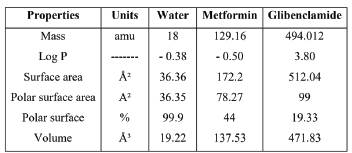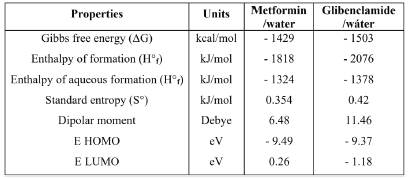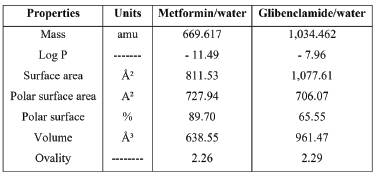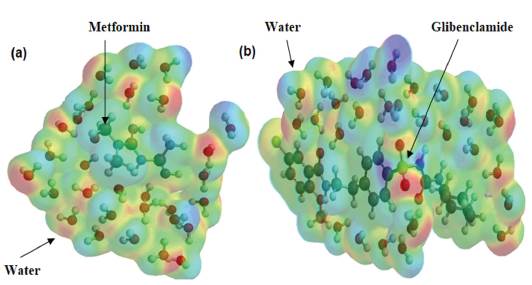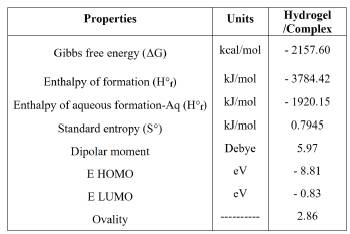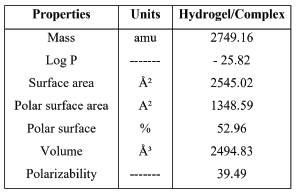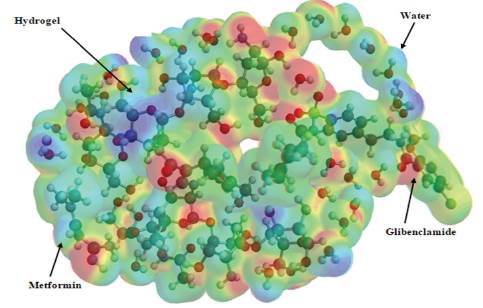Introduction
Nanotechnology has allowed for the development of technologies for the early identification of diseases, a field where nanomedicine represents the main area of application. The applications of nanomedicine consist in the formation of images, the detection, and diagnosis of diseases as well as controlled delivery systems which increase the effectiveness of the release, the tolerability, the specificity of the drugs, and the reduction of side effects, which has increased the availability of new medical treatments [1-4]. Nanomedicine allows the study of different types of molecules such as proteins, drugs, vaccines or nucleic acids to carry out the diagnosis and treatment for cancer, diabetes and tissue engineering [5-6].
The World Health Organization (WHO) predicts a population of 500 million adults affected with type 2 diabetes by the year 2030 [7]. The design of new drug administration systems allows the penetration in the cellular tissues to carry out the glucose measurement and later perform the controlled release of antidiabetic drugs, such as glibenclamide and metformin, in complete doses. These delivery systems are synthesized using polymers, micelles, liposomes, and biodegradable polymer nanoparticles [8]. Release systems represent the main application of hydrogels, which are obtained by the dispersion in water of a polymer solution and are characterized by the degree of swelling, viscosity, pH, biodegradation, and degree of crosslinking [9].
Hydrogels are used as intelligent transporters due to their swelling capacity, release kinetics, and biocompatibility, which have generated more research at the molecular level in order to modify their structure and optimize their efficiency in pharmaceutical applications [10]. The main polymers include chitosan, poly(lactic acid-co-glycolic acid), and dextran [11].
Chitosan is a polysaccharide that allows for the release of a drug in a hydrogel due to the hydrophilic nature of functional groups such as OH, COOH, and NH2 through the formation of hydrogels [8]. It also allows the adsorption of nanoparticles due to the rupture of the internal structure of enterocyte to reach the bloodstream, obtaining a controlled release system sensitive to external stimuli [11]. Chitosan hydrogels have been used in anticancer therapies as well as in controlled release systems [12-14].
Currently, computer models are used to analyze, design, and evaluate the effectiveness of new drugs with physical-chemical properties and specific biological activities, reducing the problems of effectiveness in medical treatments [15]. Thus, the pharmaceutical industry has increased the design of release systems using classical force fields or quantum mechanical models for the modeling of biological systems or the design of drugs where the calculation of Gibbs free energy is obtained for several thousand atoms simultaneously [16].
Quantitative Structure-Activity Relationship (QSAR) properties allow the calculation of non-covalent interactions, that is, they allow predicting the structure and biological behavior of macromolecules and their interactions with drugs, receptors or drug-receptors using descriptors such as thermodynamic, lipophilicity, physicochemical, electronic, and biological properties, solubility, and diffusion coefficient [3, 17-20]. The partition coefficient (Log P) is one of the most relevant QSAR properties because it provides information about the effectiveness of a drug to cross biological barriers and to reach the specific site for drug release. Log P defines the intermolecular behavior of the drugs in the human body, being widely used in the pharmaceutical sector [21].
The calculation time in DFT and AB-initio results in a higher computational cost due to the size and type of systems that are analyzed. However, the semi-empirical models of quantum mechanics simplify these times due to the incorporation of parametrizations as well as the exclusion of functions of different atoms. The PM6 model of quantum mechanics was developed for 9 000 compounds from experimental bases in conjunction with the AB-initio method, which predicts the heat of formation and the geometry of optimization more accurately because information is obtained from the interactions of atomic, hydrogen bonds as well as the use of d orbitals that allow the study of transition metals [16, 22-24].
In this work, the PM6 model was used to determine the optimization geometry, QSAR properties and the molecular electrostatic potential (MESP) in the adsorption of a metformin/glibenclamide complex on chitosan hydrogels.
Materials and methods
All the simulations were performed in an Intel(R) Core (TM) i7 CPU @ 2.53 GHz with 4 GB RAM, having windows XP environment. The simulations involved metformin, gliblenclamide, metformin/water, and glibenclamide/ water, as well as the complex (metformin/glibenclamide) where the calculation of the energetic properties and the molecular orbitals were made by selecting the PM6 semi-empirical method. Additionally, for determining the solvation energy (Aq) in the different simulations, the Cramer-Truhlar SM3 method, a SM5.4 solvation of the Spartan software was used [24].
Subsequently, using the Compute menu the QSAR properties such as surface area, volume, mass, and polar surface area were obtained. The Log P was calculated using the Spartan software by selecting the Ghose-Crippen method. This method is independent of the wave energy function, that is, the calculation is not influenced whether it is obtained using a quantum mechanics, molecular mechanics or a semi-empirical method. HOMO and LUMO molecular orbitals were obtained by solving the wave function by means of the PM6 semi-empirical method.
Tables 1 and 2 show the thermodynamic and QSAR properties of water, metformin, and glibenclamide, where a negative Gibbs free energy was obtained. Besides, the solvation energy indicates the dissolution of both drugs in water through hydrogen bonds. Electrostatic Potential maps (MESP) were calculated in the Spartan program by selecting the Hartree-Fock method with a 3-21G set. Figure 1 shows the MESP of water, metformin, and glibenclamide. It can be observed that the regions of high electronic density (in red) are presented in N-H, S=O, C=O and O-H bonds, while the regions of low electronic density are presented in the CH bonds.
Materials and methods
Drugs/water
Tables 3 and 4 show the energetic and QSAR properties of the metformin/ water and glibenclamide/water solutions at 298.15 K, where the Gibbs free energy (AG) indicates the spontaneous formation of both individual aqueous solutions attributed to a strong interaction of the OH bonds of the water with the receptor groups of both drugs and to the drugs polar surface originated by the presence of atoms with different electronegativity in each molecule.
The existence of an electrostatic attraction between water and both drugs caused by the rupture of the individual water ions to obtain a thermodynamic equilibrium was also observed, and then corroborated by the negative partition coefficient shown in Table 4 and the dipole moment indicating a conformational change in the structure of both solutions caused by the electronegativity of OH, CO, SO in both drugs [25-26].
The MESP of the dissolution of both drugs in water are depicted in Figure 2. The electronic distribution shows that the regions of high electronic density were located in the OH, C=O and S=O bonds, while the regions of low electronic density were observed in the CH bonds. Figure 2(a) metformin shows an attraction between hydrogen in water and oxygen in the OH, while in Figure 2(b) it is observed that hydrogen bonds originate between hydrogen in water and the carbonyl group.
This behavior corroborates the formation of a new bond that generates the dissolution of both drugs with water.
Hydrogel/Complex (metformin/glibenclamide)
Table 5 shows the adsorption of the complex (metformin/glibenclamide) on the chitosan hydrogel because the Gibbs free energy and enthalpy indicate an exothermic process, that is, a spontaneity in the adsorption process produced by the increase of interactions in the hydrogel/complex. Also, the dipole moment reveals that the decrease of the dipole-dipole forces produces a greater solubility due to the increase of the intermolecular forces through the formation of hydrogen bonds, generating geometry with the greater structural stability of the hydrogel/complex [27-28].
The formation of hydrogen bonds is attributed to the increase in the polar surface (Table 6). Also, the existence of the affinity of the complex (metformin/glibenclamide) with the water present in the hydrogel is observed due to the negative value of the partition coefficient that indicates that the drugs are related to the polar behavior of the water. Additionally, the surface area contributes to penetrate the cell membrane and may be in contact with the bloodstream to establish a drug delivery system [29-30]. The cationic character of chitosan allows obtaining stimuli sensitive nanohydrogels to the glucose [14] due to the protonation of the amine groups that produce the adsorption of drugs in the hydrogel/complex.
Additionally, a new controlled release system is obtained since the nanometric particles of the complex have greater stability, bioavailability and longer life time, being thus more effective causing the rupture of the permeability barriers, achieving the controlled release [31].
Figure 3 shows the map of the electronic distribution of the adsorption of the drugs (glibenclamide and metformin) in the chitosan hydrogel, where the deformations present in the rings of glibenclamide are attributed to the functional groups OH and NH of the chitosan. Additionally, the regions of high electronic density zones correspond to the polar groups on the surface of the hydrogel, attributing the adsorption of both drugs to the formation of hydrogen bonds. In addition, in the sulphonylurea group of glibenclamide, a positive electronic density is observed, while in metformin, ionic interactions producing electrostatic forces that corroborate the transfer of charge with the hydrogel are observed [32-34].
Conclusions
The computational analysis showed that there is a process of adsorption of metformine/glibenclamide complex using chitosan hydrogels due to the thermodynamic values as a Gibbs free energy of -2157.60 kcal/ mol. The negative value of Gibbs free energy determined a spontaneous reaction which corresponded to the formation of hydrogen bonds. This was corroborated by the negative value of the coefficient partition (Log P) of -25.82, which indicated the hydrophilic capacity increases in the adsorption and the dipole moment change as a product of a greater electronegativity attributed to hydrogel.
Moreover, the surface area indicated that both drugs are dispersed molecularly, that is, there would be no problems of crystallinity in the hydrogel attributable to the interactions and the size of the pores in the hydrogel that produce thermodynamic stability. Finally, through the enthalpy of formation and the enthalpy of aqueous formation it was possible to determine that glibenclamide has a greater affinity for hydrogel due to the volume occupied by the molecule in the hydrogel. The OH and SO functional groups of glibenclamide increased the water solubility of the hydrogel as well as the presence of secondary bonds such as the van der Waals forces.













